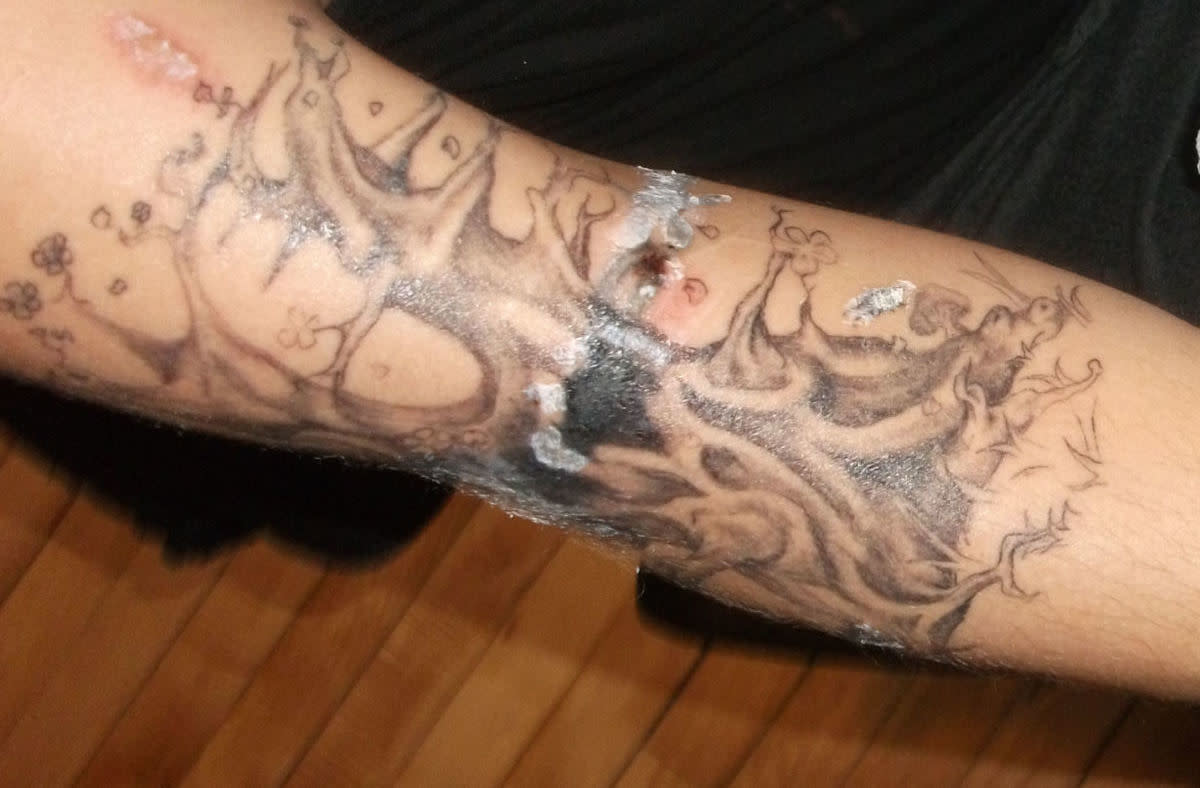Laser tattoo removal treatments, risks, side effects
Laser tattoo removal procedures can fully remove a tattoo permanently from any part of the body.
Laser tattoo removal or laser tattoo removal surgery involves the use of an intensely heated laser beam to dissipate each individual ink particle in the tattoo.
The tattoo removal laser beam passes through the skin and the heat is absorbed by the individual ink particle. The microscopic ink particle will detach itself from other ink particles.
The natural waste system of the body will then flush out the unwanted ink particles within a few weeks.
To remove a tattoo with laser treatment will take several sessions depending on the type of ink used in the tattoo and the size of the area to be treated.
Laser tattoo removal treatments using the Q-switched laser developed after 2006 can remove professional and amateur tattoos. The modern technology involved in these new Q-switched lasers allow for all inks and ink colors to be removed more easily than any other previous methods.
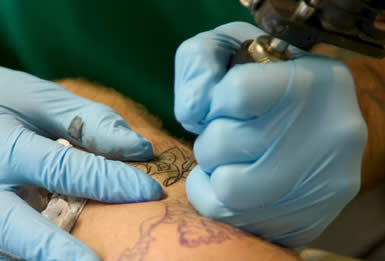
Laser tattoo removal risks
Laser tattoo removal is like any other medical procedure, there are certain elements of risks involved. An initial consultation with a laser technician will permit a more in depth discussion for the individual prospective patient which will indicate all the potential risks for that person.
Medical information may need to be divulged to ensure ongoing medical problems are not irritated by the laser.
Burning skin
The heat of the laser will cause a certain degree of redness as the skin will burn under the intense heat. This is a side effect which every patient will receive and the degree of burning felt will depend upon the skin pigmentation of individual patients.
Lighter or paler skinned patients will feel most laser tattoo removal effects more than darker skinned people. This is only a temporary side effect and will dissipate within a few days.

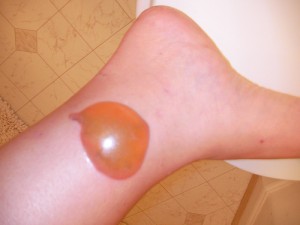
Scabbing or crusting skin
This is a common occurrence after receiving laser tattoo removal or laser hair removal procedures. Scabbing or crusting of the skin is simply the bodies natural healing mechanism doing its work.
The scabs should not be picked otherwise permanent scarring may be received. If itching occurs a cool compress should be applied with a bandage or covering to prevent the patient from patients scratching the treated areas.
Stinging and pain
There is always a certain amount of pain for each patient receiving laser tattoo removal procedures. Some patients say it resembles an elastic band being constantly flicked on every part of the treated area at the same time.
Some patients feel more pain than that. The stinging sensation is again the healing of the skin by the body and will cease within several days.
Blisters
Blisters may occcur and should be left alone to heal themselves. Pretty common because of the extreme heat but if excessive blisters do form return to the laser technician for advice.
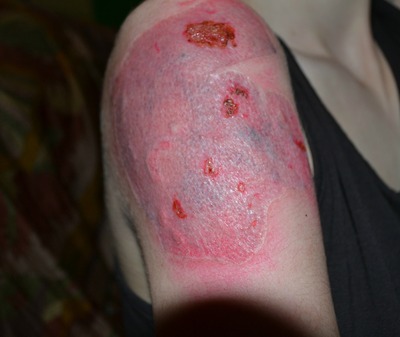
Infections
Many infections can take place if the laser technicians aftercare procedures are not followed. Exposed skin can easily be infected and should be dabbed with an anti-biotic cream.
Scarring
Scarring during laser tattoo removal procedures can occur by picking at scabs or crusted skin after treatment. Scarring can also happen due to the inexperience of the laser technician .
The laser may be to hot for the skin and may cause scarring if the skin becomes overheated. It is advisable for a prospective patient to choose a technician with experience in laser removal techniques such as laser hair removal.
Hyperpigmentation
This is when the skin darkens after receiving laser tattoo removal treatments. Time and bleaching agents can cure this rare phenomenon.
Hypopigmentation
This happens very rarely and is where the skin lightens during the laser procedure. The skin may appear white during the process but this is natural for the skin as the intense heat will instantly change the pigmentation of the skin only temporarily. Hypopigmentation is more permanent and may take years for the skin to return to normal pigmentation. Sometimes the skin will never return to the same color.
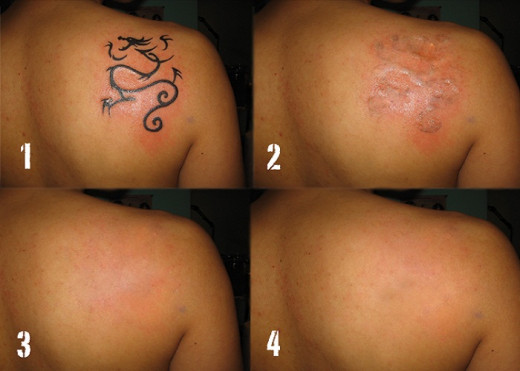
Laser tattoo removal sessions
A cooling gel or liquid is applied to the area to be treated prior to any treatment commencing.
This is to helpdisperse the heat from the laser to help prevent burning and scarring. The time of each session depends upon several factors. The size of the area is the main factor. The type of ink used is another and whether the tattoo is a professional or amateur tattoo.
Darker ink colors absorb the heat of the laser more than lighter colors and the hardest color to remove is purple as purple has no Q-switched laser to directly remove the light spectrum. Purple can be removed but this may take more sessions.
Between 6-12 sessions is required to remove most tattoos from the skin, but usually between 12-15 sessions will allow for a better result with no ink left in the skin.
The tattoo will fade over several weeks after each session of tattoo laser removal treatment and for the skin to heal it is recommended that a period of six to eight weeks between appointments should be left to avoid over lasering the skin.
Some physicians recommend a period of 3 months should be left between each session to allow the bodies wastage system time to allow the dissipated ink particles to be removed.
Home tattoo removal machines
There are many different makes and models oh home laser removal machines. Each machine claims to permanently remove the tattoo ink from the skin.
Untrained use of theses machines may produce undesirable skin complaints and should only be used if the person is competent in the use of the machine. All machines come with full instructions which should be read thoroughly prior to using and is best initially used in a place which cannot be seen.
The machine pictured is slightly expensive but when weighed against the cost of nearly fifteen sessions to remove the tattoo, this may be a viable option.


